I flew Southwest for the first time since it stopped blocking middle seats. The friendly service didn't make up for inconsistent social distancing practices
Thomas Pallini

- Southwest Airlines stopped blocking seats on its aircraft in December 2020 and flights can now be filled to capacity.
- The trade-off is strict mask enforcement in addition to existing health and safety protocols.
- Inconsistencies remain across the airline's network, however, especially at outstation airports.
Southwest Airlines was a standout for most of the pandemic as it was one of the few airlines blocking seats to promote social distancing. Only 67% of seats were sold on its flights, allowing all rows to have at least the middle seat open.
That policy was abandoned in December, however, after the airline announced a $1.2 billion third-quarter loss. CEO Gary Kelly said the policy cost the airline $20 million in lost revenue over the summer.
Southwest cited studies from the Department of Defense and Harvard School of Public Health that showed the effectiveness of high-efficiency particulate air filters, or HEPA filters, and mask-wearing in limiting the onboard spread of COVID-19.
But leaving middle seats open was what truly set the airline apart from the rest of the big four US airlines, alongside fellow seat-blocker Delta Air Lines, as Insider found when reviewing new health and safety practices of the country's largest airlines in mid-2020.
With open seats no longer a factor, I sought out to see if flying Southwest had the same appeal by taking two flights on the airline during a recent trip.
Here's what it was like flying America's largest low-cost carrier in 2021.
My journey started at Miami International Airport from where I flew to Houston Texas, and then Denver. Southwest just began Miami flights in November 2020 as part of a new push to serve larger airports in major cities.
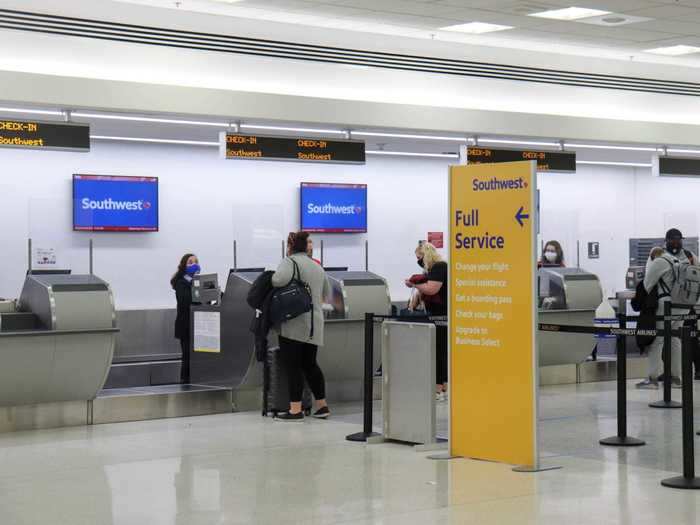
The airline was off to a good start as the check-in area had been overhauled to include plexiglass partitions and hand sanitizer dispensers.
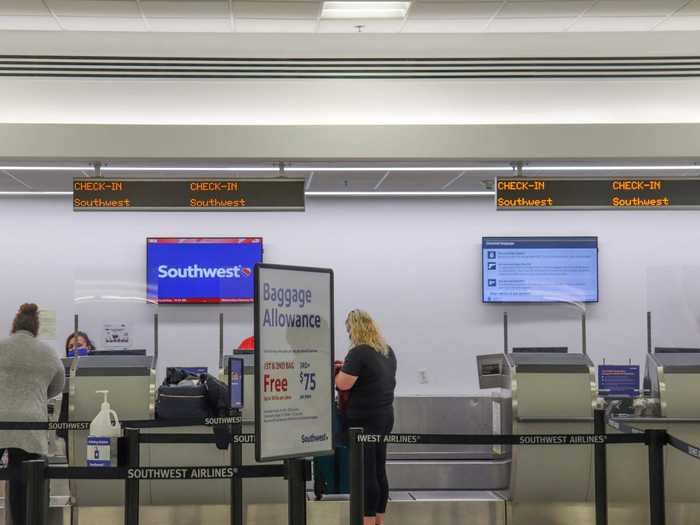
I opted for the kiosk, where one of the first screens was a COVID-19 declaration. I acknowledged the airline's mask mandate and confirmed that I didn't have or and had not been exposed to COVID-19, and that I checked my temperature.
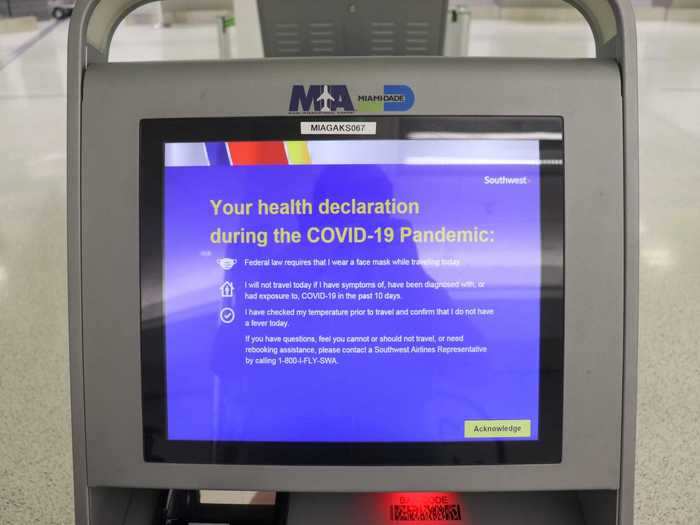
Then it was off to the gate where the airline had installed more of the same plexiglass partitions at the counter. Gate signage, however, was standard with no digital messaging outlining new health and safety, as some other airlines are doing.
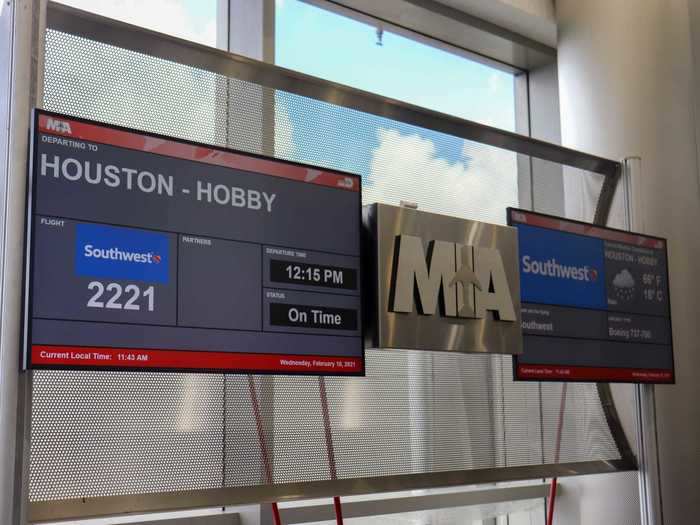
Miami International is a new airport for Southwest so I wasn't expecting anything over the top but the airline hadn't installed any updated placards or signage here to implement the new boarding procedure.
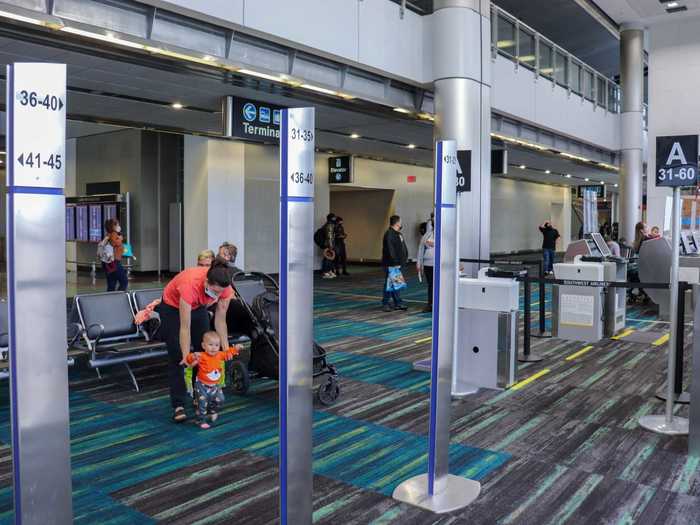
Before the pandemic, Southwest flyers would line up on each side of these posts according to their boarding position and around 30 passengers would board at a time.
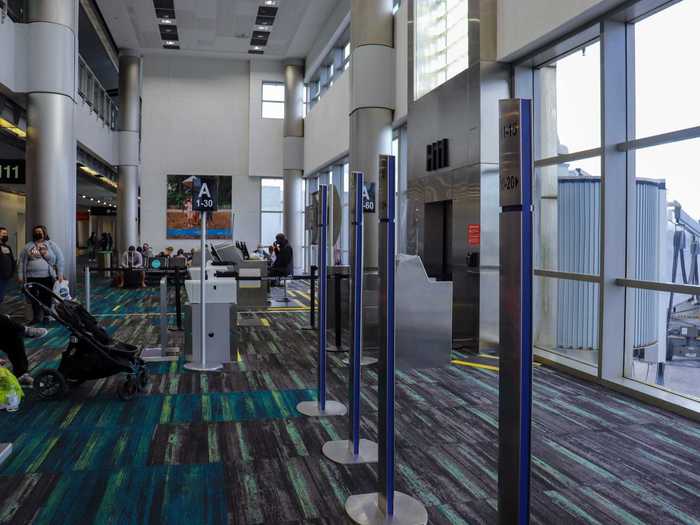
The process has been changed to only have 10 flyers board at a time with the rest remaining seated until their 10-person group is called. Since Miami service launched during the pandemic, it would stand to reason that the airport would have the most updated signage.
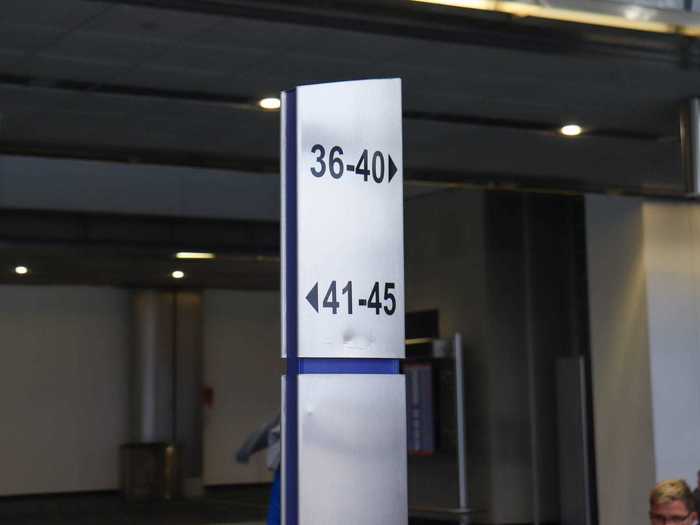
Boarding then proceeded in groups of 30 instead of 10.This is a common problem at Southwest's outstation, as I found when I first flew it during the pandemic from New York to Nashville.
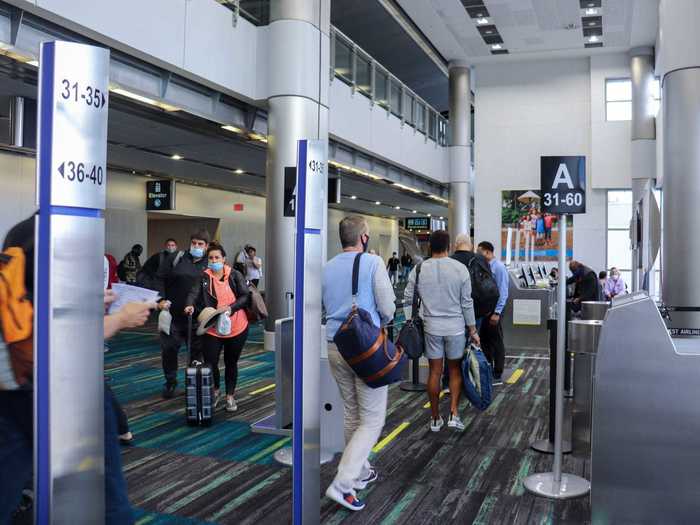
The key to boarding early, by the way, is to check-in exactly 24 hours before the flight. I snagged an A37 position so I'd be in one of the first groups to board.
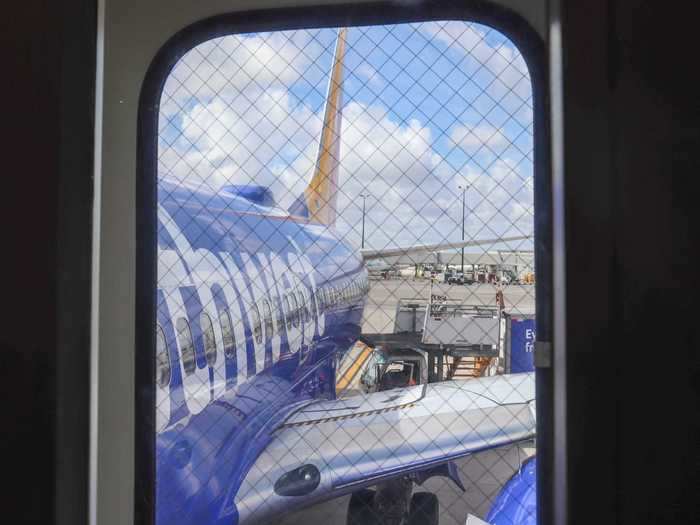
On the jetway, there were reminders to social distance - but they hadn't been placed by Southwest. Out of the big four, only Delta and United have these placards, and these appeared to be placed by Delta.
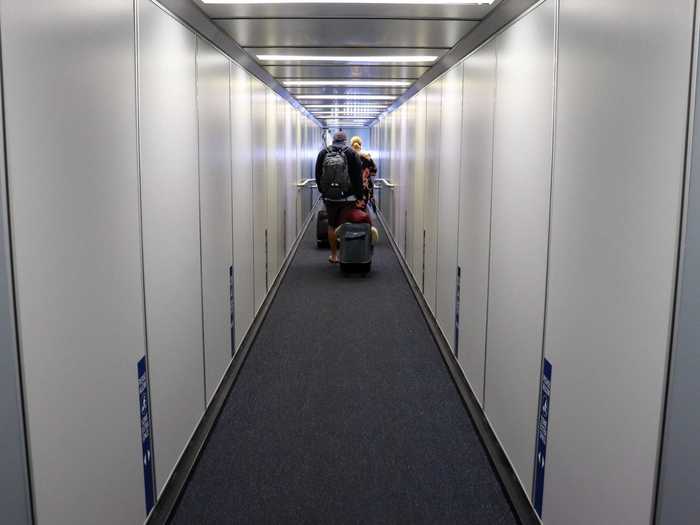
These placards are seldom adhered to but it's a nice gesture by the airlines that place them.
Our flight to Houston was operated by the airline's smallest plane, the Boeing 737-700. There were so few passengers that the aircraft's size didn't matter.
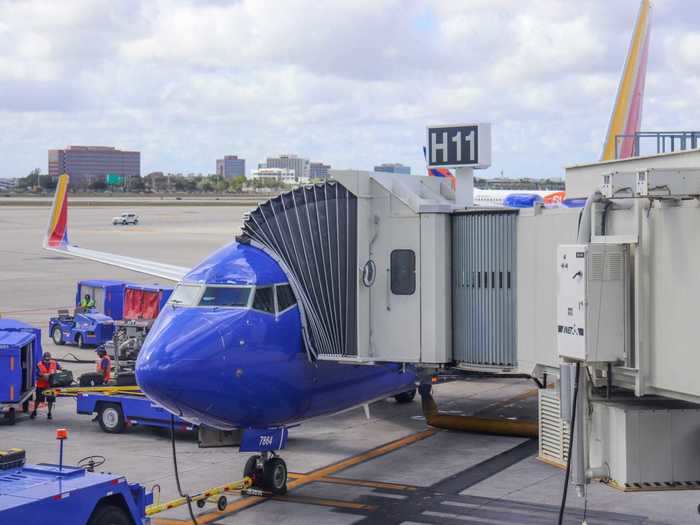
Boarding was routine, and the airline did not give out sanitary wipes or hand sanitizer like some others do.
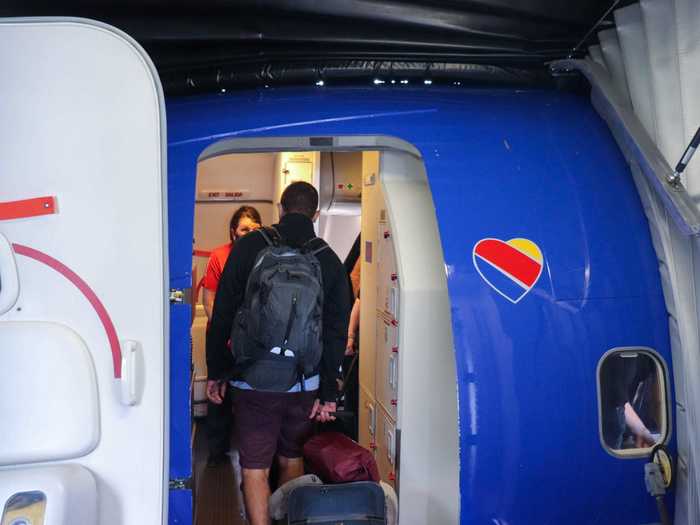
The one downside to Southwest's unique boarding procedure is that it doesn't allow for back-to-front boarding, a policy being adopted by many airlines during the pandemic.
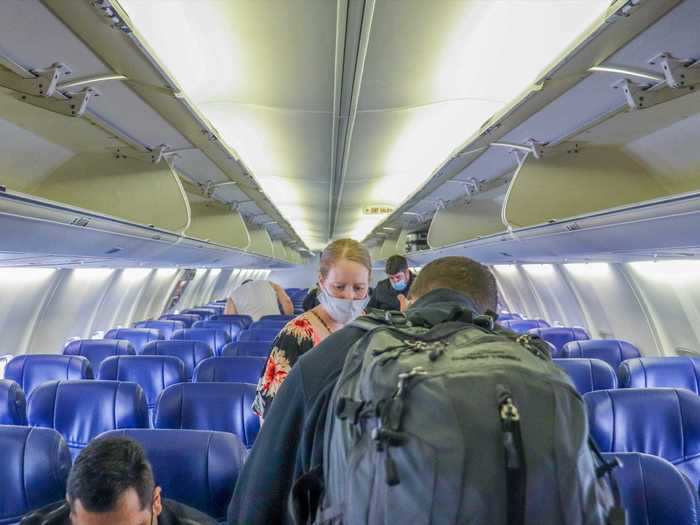
The aircraft was impressively clean at first glance. Southwest's planes are cleaned each night with a disinfectant by "fogging" with an electrostatic sprayer and are touched up in between flights by the crew.
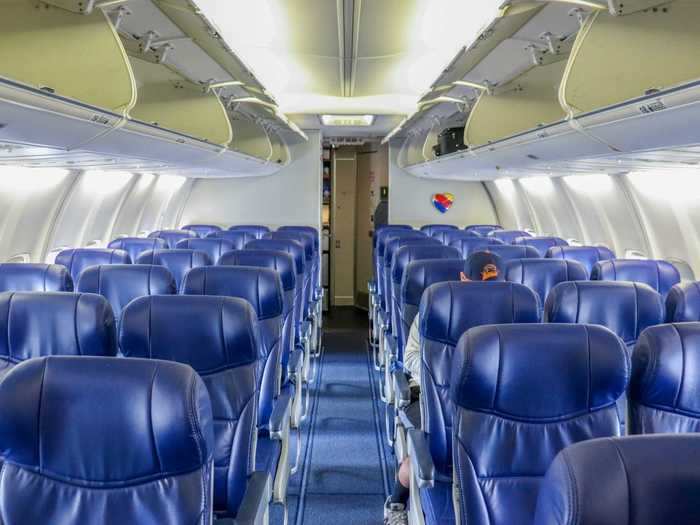
And it truly showed. This aircraft looked brand new despite it having an older interior.
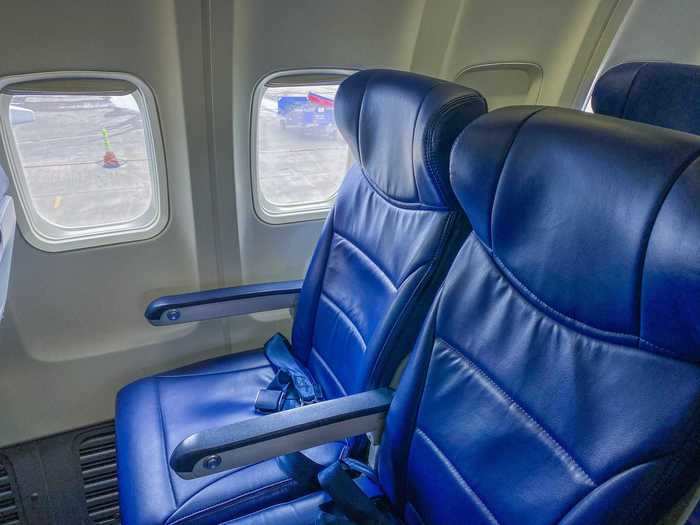
The only issue I found was that leftover bits of plastic were left in my seat-back pocket. It wasn't a huge issue but, as I've said in other reviews, even the smallest item could make a customer question what other spots were missed.
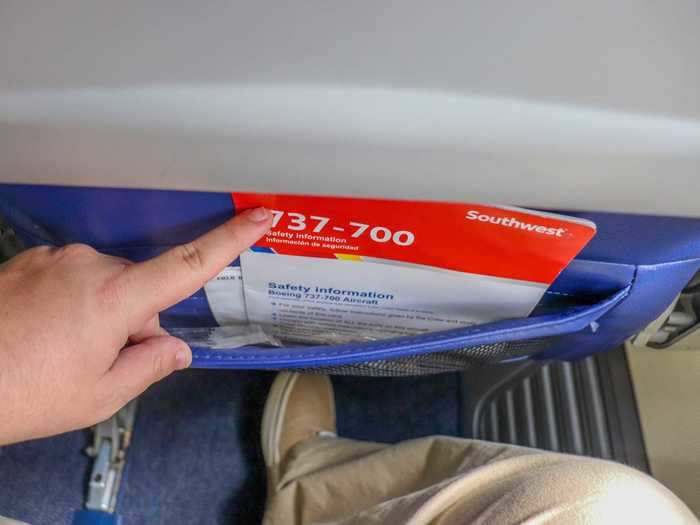
Other than that, my immediate area and tray tables were impeccably clean.
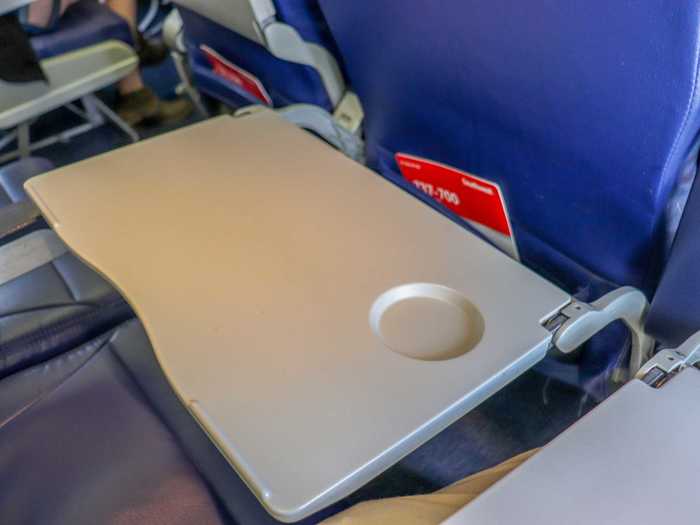
With Southwest's seat blocking policy no longer in place, I had to hope that nobody would sit next to me for the two-hour flight to Houston. I lucked out and had the row to myself.
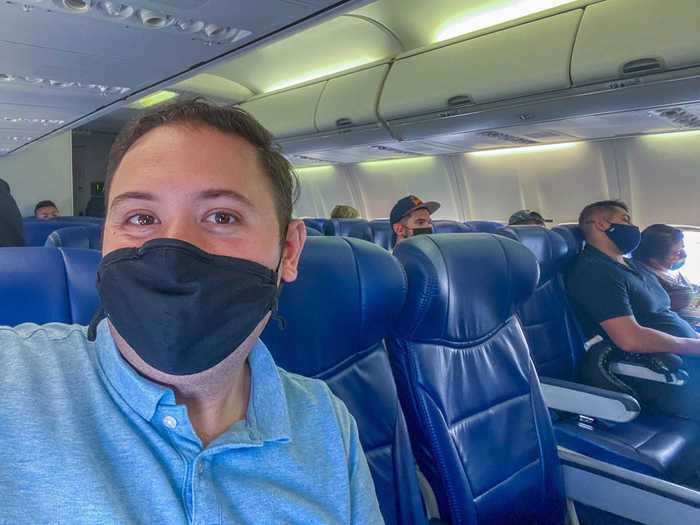
Flight attendants were strict with the face covering requirement, specifically outlining that it's now federal law that passengers need to have a covering over their face and nose at all times except when eating and drinking. They even warned that they'll wake passengers up if they aren't complying.
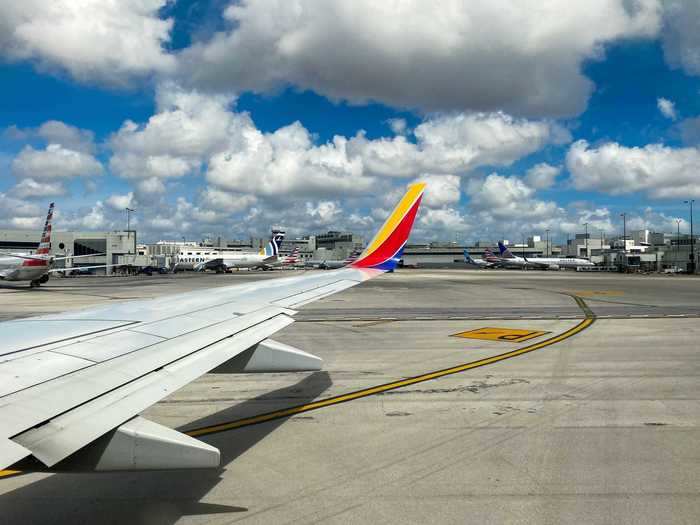
The appeal was genuine as mask-wearing helps prevent onboard transmission, which helps airlines show that flying is safe. "Believe me it's not because we want to nag you," said one flight attendant. "It's because it's what we have to do because we want to keep flying and taking you places you want to go."
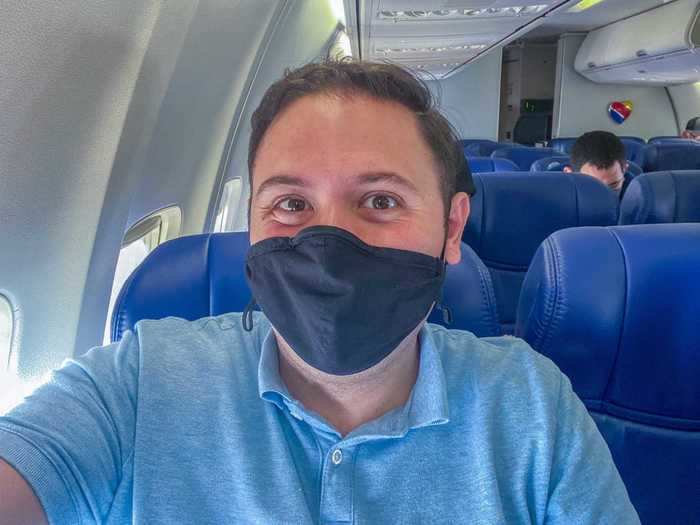
The in-flight offering is basic: a cup of ice water and a snack mix. It isn't much, but Southwest has been offering this since the beginning of the pandemic - even on shorter routes.
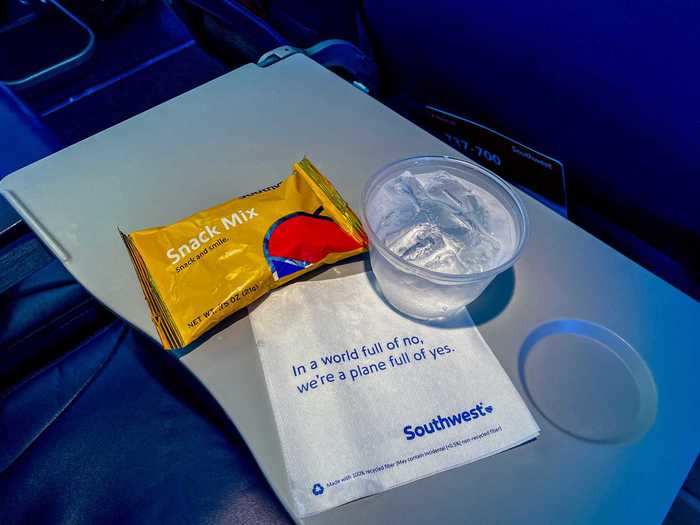
The only downside to the service was that flight attendants weren't wearing gloves while handing out the items.
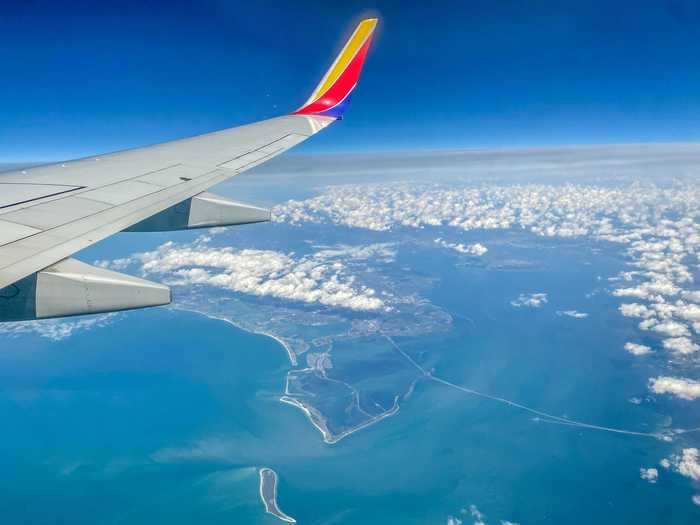
After the service, it was time for a quick walk around the plane. The harsh mask warning appeared to have worked as passengers were wearing their coverings correctly when I walked around the cabin.
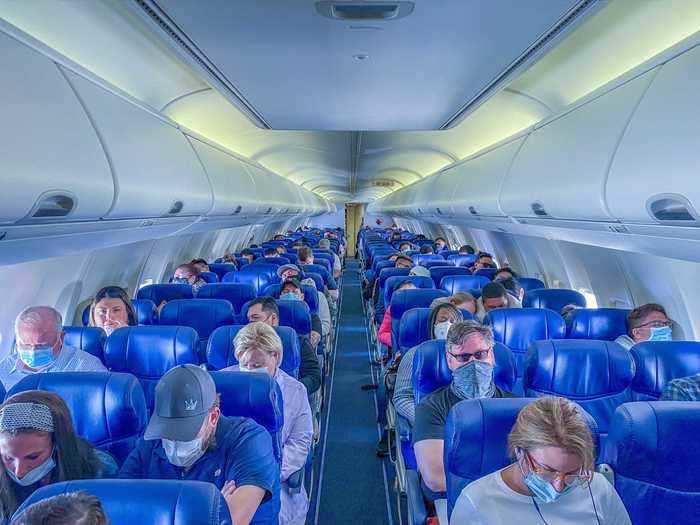
Soon enough, we were landing in Houston. Flight attendants came on to remind passengers to social distance while deplaning. The flight was luckily empty enough where that could be somewhat accomplished.
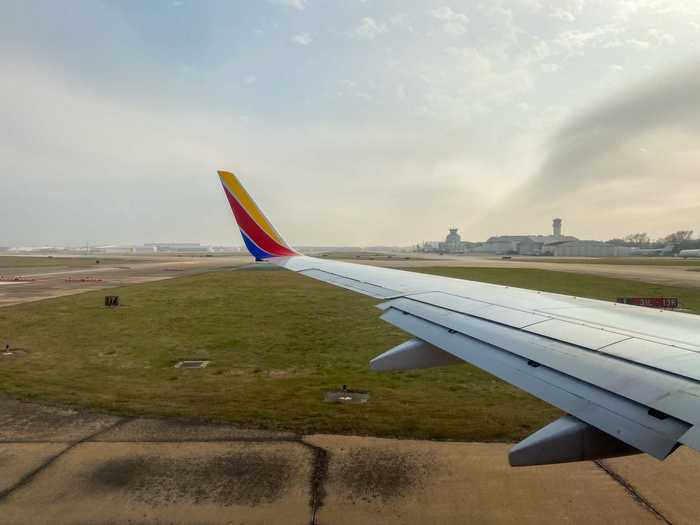
My next flight was luckily at the very next gate so I didn't have to walk too far through the airport.
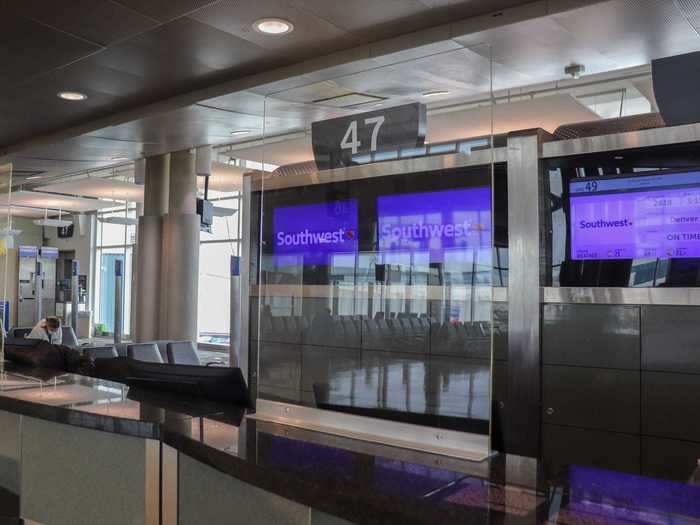
Houston is a Southwest stronghold and the airline has retrofitted its gate counters with plexiglass partitions and hand sanitizer. The gate signage still remained blank instead of highlighting the airline's new health and safety policies and practices, which is a wasted opportunity in my opinion.
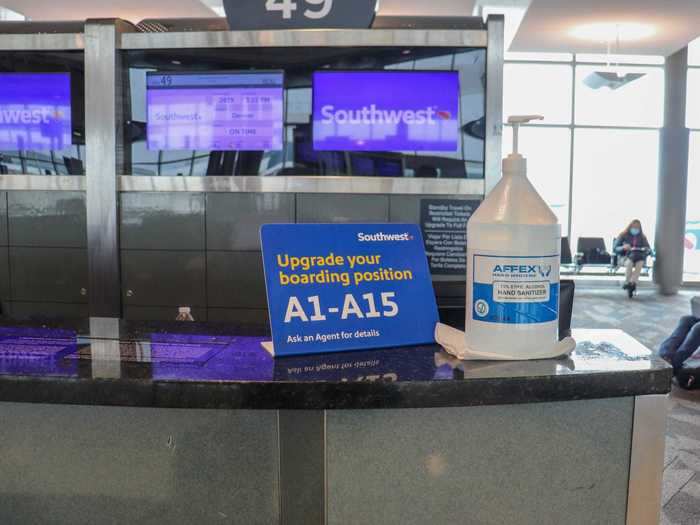
The gate area for this flight was markedly more crowded so it would be a better opportunity to see how the airline handled social distancing on a full plane.
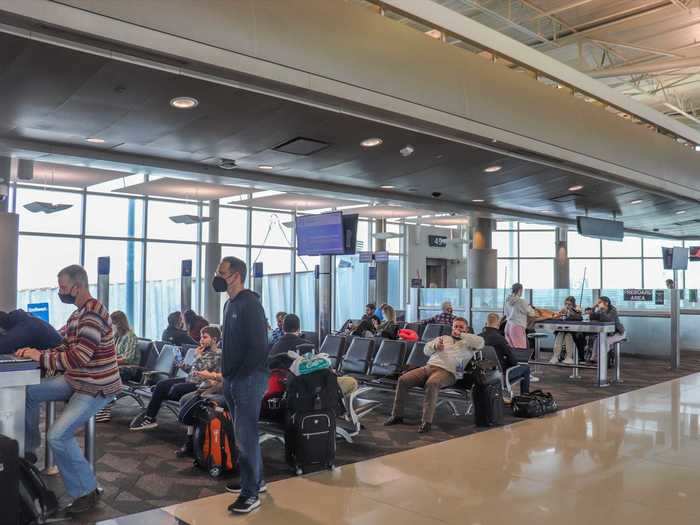
Our aircraft type was the same, the smaller Boeing 737-700, so it would very likely be a full flight. And unlike some of its competitors, the airline does not notify passengers ahead of time of full flights nor offer a complimentary change to a less crowded flight.

The gesture, however, is often meaningless as airlines cannot control how full their flights are and a moderately full flight can very quickly become a sold-out flight.
The gate area had been completely overhauled with social distancing reminders in a completely different scene from that in Miami.
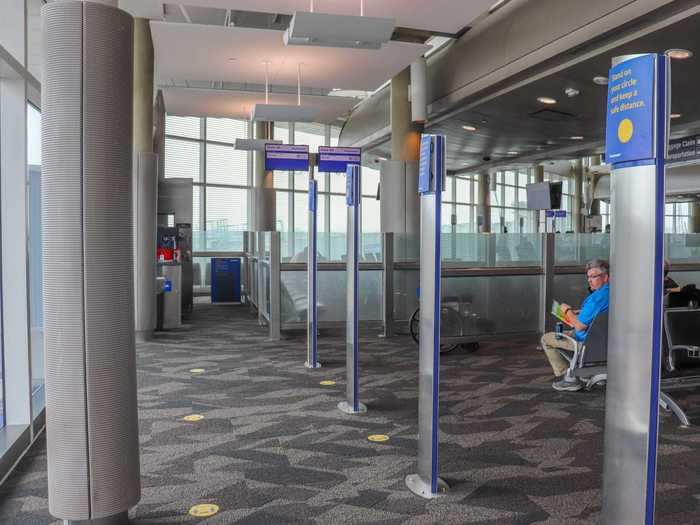
The same boarding posts were in place, but were now outfitted with new messaging on the boarding procedure and reminders for passengers to keep their distance.
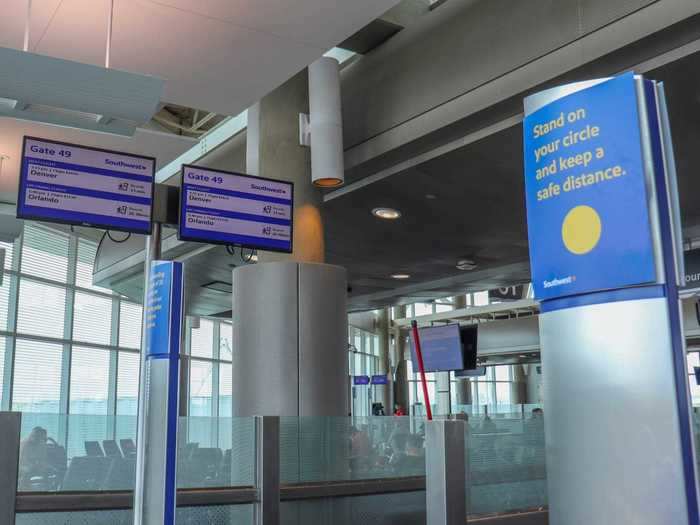
Even floor placards were installed on the ground.
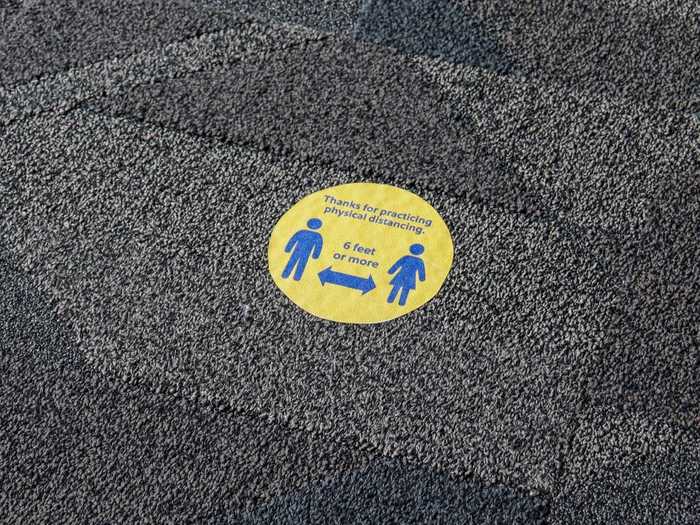
Come time to board, the screens showed the new boarding process and told those not in the group to remain seated. The gate agent also reviewed the airline's mask policy and reminded passengers that it's now federal law to wear a mask.
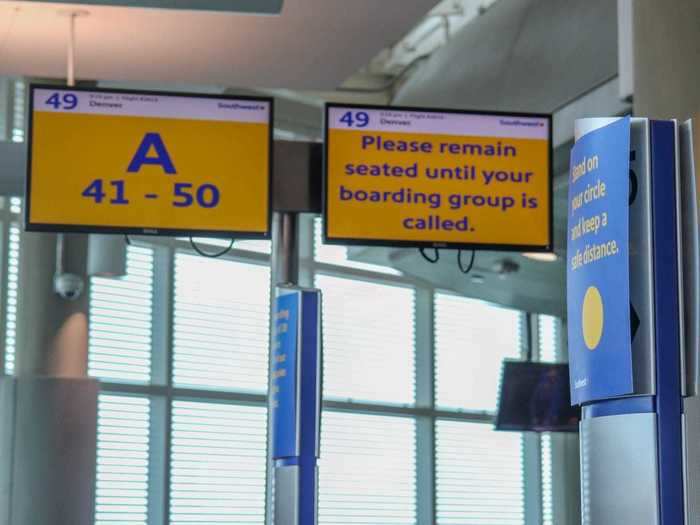
Only 10 passengers boarded at a time compared to the 30 in Miami.
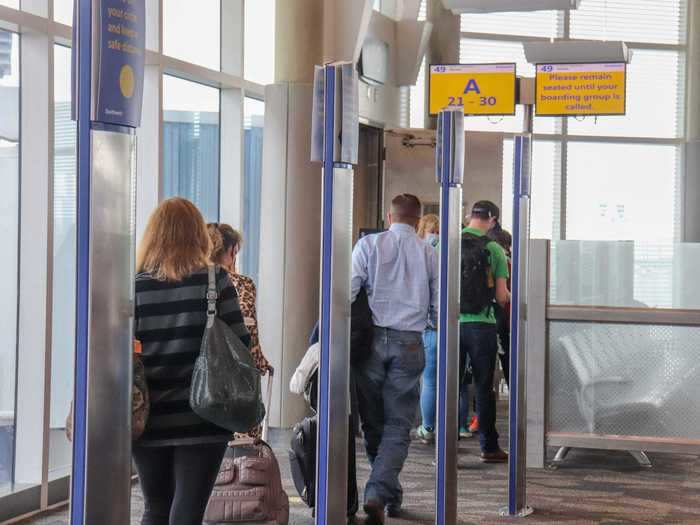
The walk down to the plane revealed no social distancing placards in the jetway.
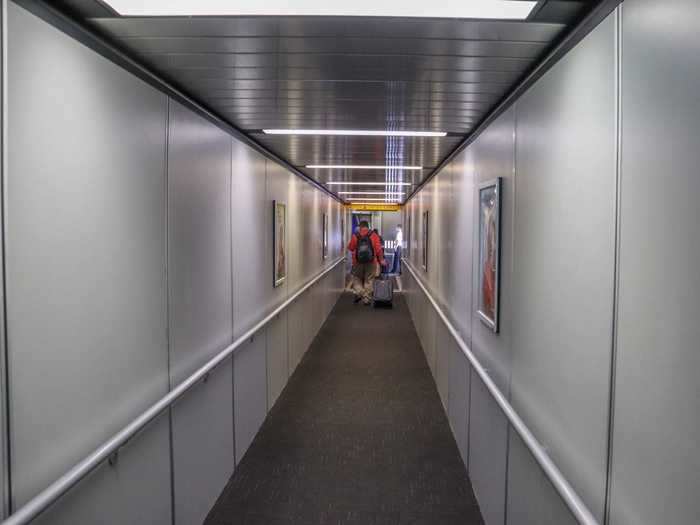
Once more, no hand sanitizer or sanitary wipe was offered by flight attendants, but the aircraft was impressively clean.
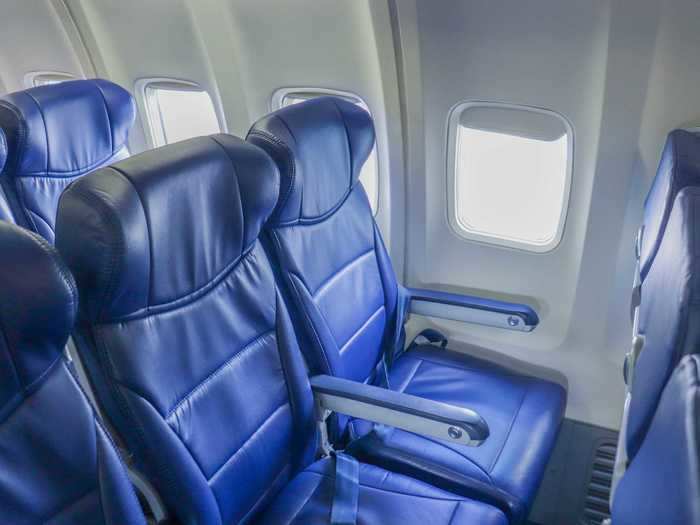
And there were no bits of plastic in the seat-back pocket this time.
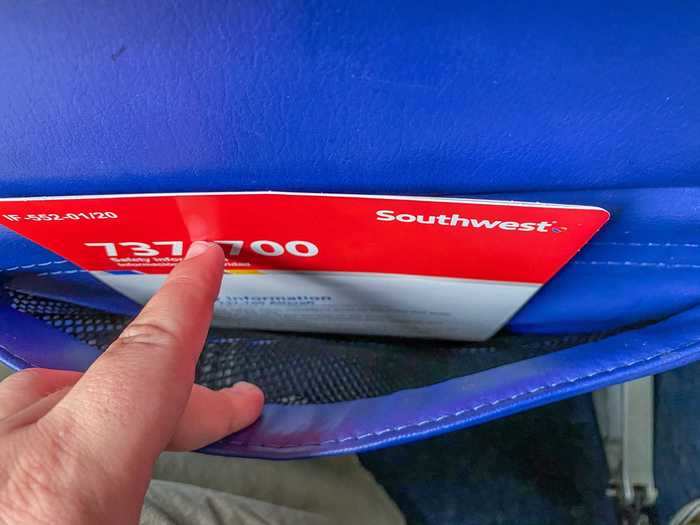
I was one of the first to board, again, but knew these rows wouldn't stay open too long since the boarding area was packed. It wasn't long before the aisle seat was taken - and the middle seat didn't survive much longer after that.
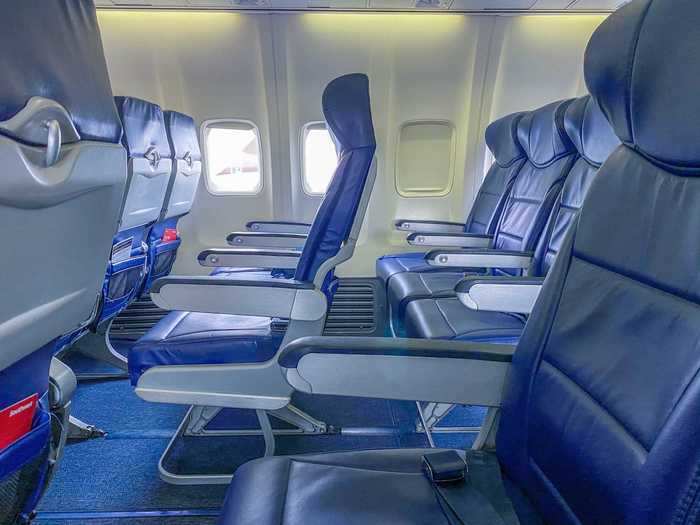
This wasn't the first time I've had a seat neighbor when flying during the pandemic, but having the middle seat open is always preferable.
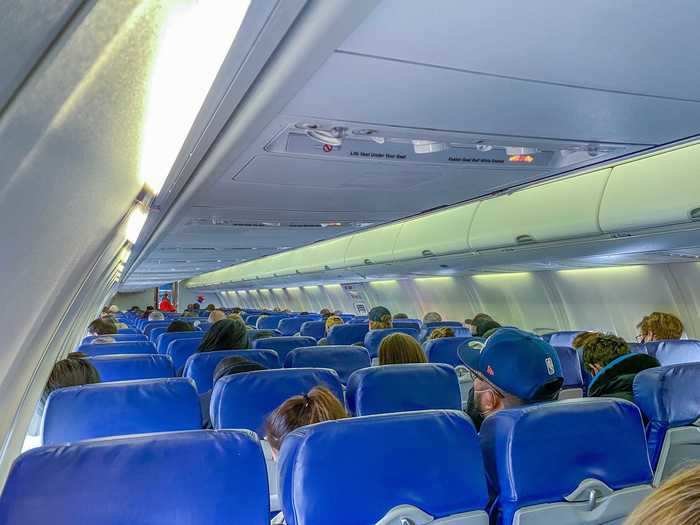
Flight attendants once more outlined the strict mask policies and then, it was off to Denver.
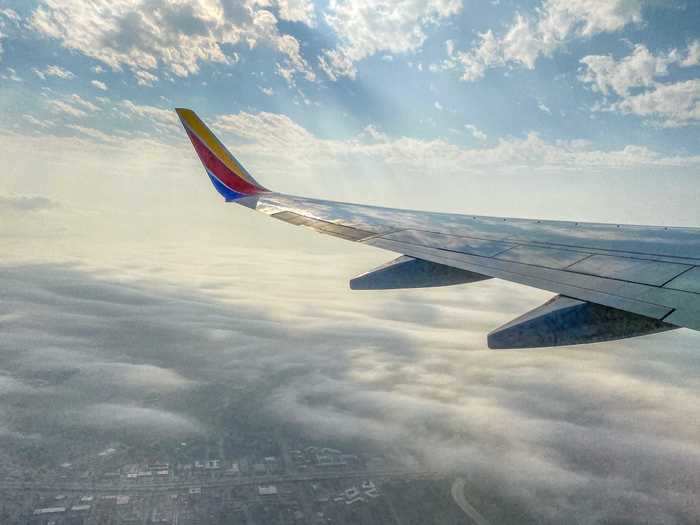
The flight was routine with the same in-flight service consisting of ice water and a snack. Overall, there were no issues with mask enforcement as most people followed the rules. When we got to Denver, there was the same reminder about distancing for deplaning.
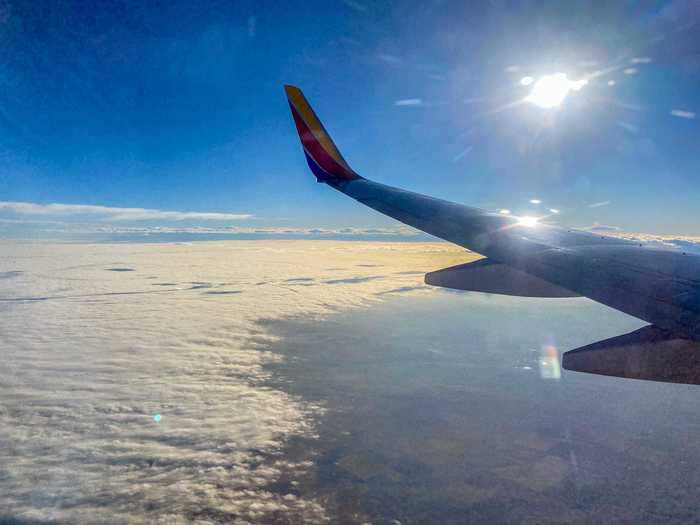
But most people stood up as soon as the seatbelt sign came off.
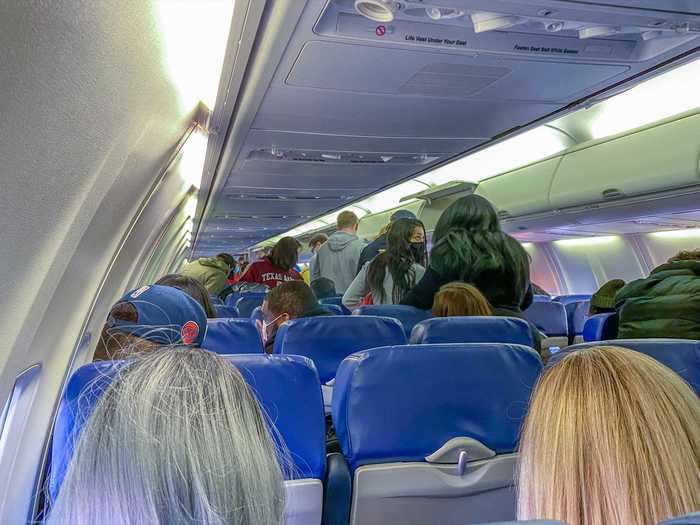
Southwest lost a lot of its appeal for me during the pandemic when it stopped blocking seats, and not much differentiates it from other carriers now. The airline is still a good choice when flying but it certainly is no longer a clear standout as it was when seats were blocked.
I applaud the airline's commitment to strict mask enforcement and was impressed by how clean the aircraft were.
Consistency is still a major issue the airline faces at its airports, however, as it was when I flew the airline in June 2020.
In Miami, for example, the airline hasn't installed social distancing reminders or implemented the new boarding procedure. It could be a consequence of the airport being new to Southwest but I've experienced the issue on other Southwest flights.
The airline without a doubt is going above and beyond what some other US airlines are doing during the pandemic but there is still work to be done.
READ MORE ARTICLES ON
Popular Right Now
Popular Keywords
Advertisement